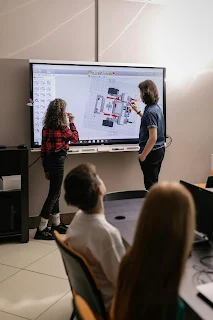Creative Ways to Teach Literature in High School.
1. Use Role Play and Dramatization
Role Play and Dramatization are interactive teaching and learning strategies used to explore real-life situations, emotions, and behaviors.
Role Play involves learners taking on specific roles in a simulated scenario. For example, in a classroom setting, students may act out a conversation between a doctor and patient or a judge and lawyer. This helps them understand different perspectives, practice communication, and develop empathy. It encourages active participation and makes abstract concepts more relatable.
Dramatization is similar but usually involves acting out a scripted or semi-scripted scene, often based on a story, historical event, or real-life issue. It focuses more on performance and storytelling. Dramatization can be more structured than role play, and it's often used in subjects like literature, history, or social studies to bring content to life.
Both strategies improve speaking, listening, and critical thinking skills. They also help in emotional development, as learners express feelings and consider the consequences of actions in a safe space.
In summary, role play and dramatization are powerful tools that make learning experiential, memorable, and engaging, especially in language, social, and behavioral education.
Let students act out scenes from novels or plays. This makes literature fun and helps them understand character motivation, tone, and plot.
Try this: Assign roles from The Samaritan or Fathers of Nations and let students create a modern version of a scene.
2. Integrate Music and Poetry.
Certainly! Here's a 200-word explanation on how to integrate Music and Poetry in teaching and learning:
Music and Poetry are deeply interconnected forms of artistic expression that can powerfully enhance learning, especially in language, literature, and emotional development. Integrating them in the classroom makes lessons more engaging, memorable, and emotionally resonant.
Music can be used to teach poetic devices like rhythm, rhyme, repetition, tone, and mood. For instance, analyzing song lyrics helps students identify metaphors, similes, alliteration, and imagery in a familiar and enjoyable context. Playing music before or during poetry lessons also sets the mood and stimulates creativity.
Poetry, on the other hand, can be set to music or performed with musical accompaniment to deepen students' appreciation for sound and structure. Students can compose their own poems and turn them into songs, fostering creativity and personal expression. This is particularly effective for learners who may struggle with traditional writing but thrive in artistic or auditory tasks.
For example, a lesson on themes of love or loss can feature both a poem and a song addressing similar emotions, prompting discussion and comparative analysis.
Incorporating music and poetry supports holistic learning by engaging both cognitive and emotional intelligence, improving language skills while nurturing empathy and cultural awareness.
Music is poetry in disguise. Play songs that reflect themes in the literature you’re teaching.
Example: Pair Tupac’s “Changes” with Langston Hughes’ poetry on racial identity.
3. Turn Chapters into Comic Strips.
Have students summarize chapters or scenes using illustrations. This works especially well for visual learners and can be done digitally or by hand.
4. Host Literature Circles
Let students choose roles (discussion director, vocabulary expert, summarizer, etc.) and meet in small groups to discuss a book. It promotes ownership and accountability.
5. Use Film Adaptations Creatively.
Watch film adaptations and ask students to compare them with the original text. Discuss what was changed or left out and why.
Pro tip: Use clips, not the full movie, to save time and spark discussion.
6.plore Author Background and Context
Let students research the author's life and historical context of the book. This builds appreciation and deepens understanding.
Example: Before reading A Grain of Wheat, explore Kenya’s colonial history and Ngũgĩ wa Thiong’o’s activism.
7. Connect to Modern Issues.
Make the literature relevant. Draw connections between themes in the book and current events or social issues.
Ask: “How is Father's of Nations relevant in today’s political world?”
8. Use Tech Tools
Try tools like:
Padlet for interactive bulletin boards
Kahoot for quizzes
Google Docs for collaborative annotations
9. Create Character Diaries or Instagram Profiles.
Ask students to write diary entries or create social media pages as if they were a character from the novel. It helps with character analysis in a fun way.
10. Allow Student Choice
Let students pick from a list of books or themes. When they choose, they’re more likely to engage deeply.
Final Thoughts
High school literature doesn’t have to be boring or disconnected from students’ lives. By using creative methods and tapping into students’ interests, you can turn your literature class into a space of exploration, empathy, and excitement.
Have you tried any of these methods? Share your favorite literature activity in the comments below!






Comments